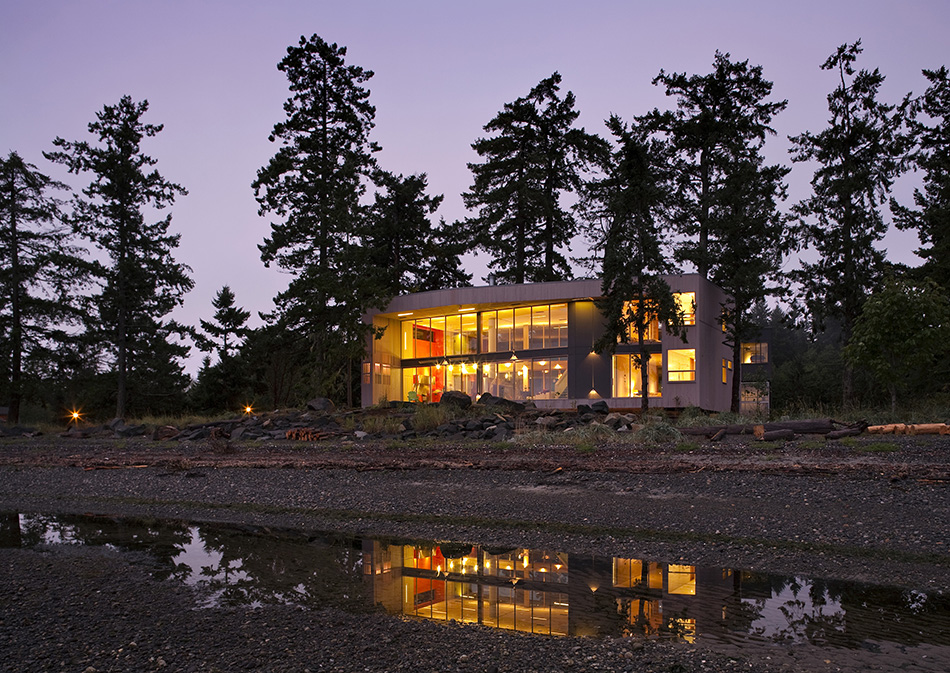
In and Among the Trees
Situated on a rugged coastline in the heart of the wind-swept Oyster River Basin flood plain on Vancouver Island, a modern residence is formed from two organically interconnected frames—one of mineral and one of wood—which float above a virtually undisturbed natural wetland. The extremely limited lot was dominated by a traversing grove of 350-year-old Douglas fir trees into which the new home was surgically inserted in order to share their shelter with the nesting bald eagles and a host of other wildlife. By honoring the site, the house dwells lightly on the beachfront, providing the unique spatial intimacy of being in and among the trees, in between the wild ocean and the soft wetlands. Through its tight geometry, restrained materials, and tall open spaces which frame the ocean and forest, the project creates a feeling of a room without walls from which to enjoy the pristine landscape in an atmosphere of stewardship and ecological sensitivity.
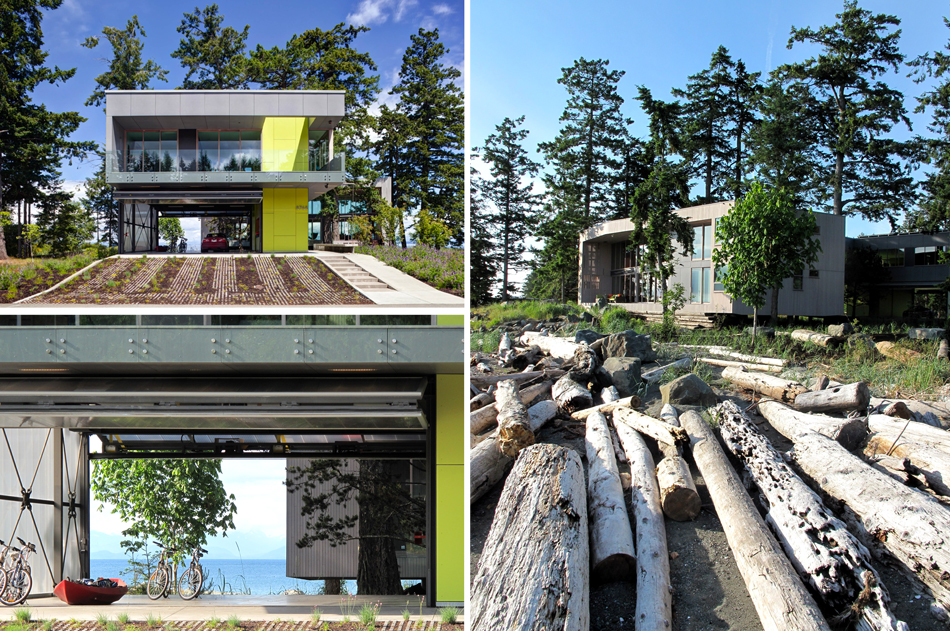
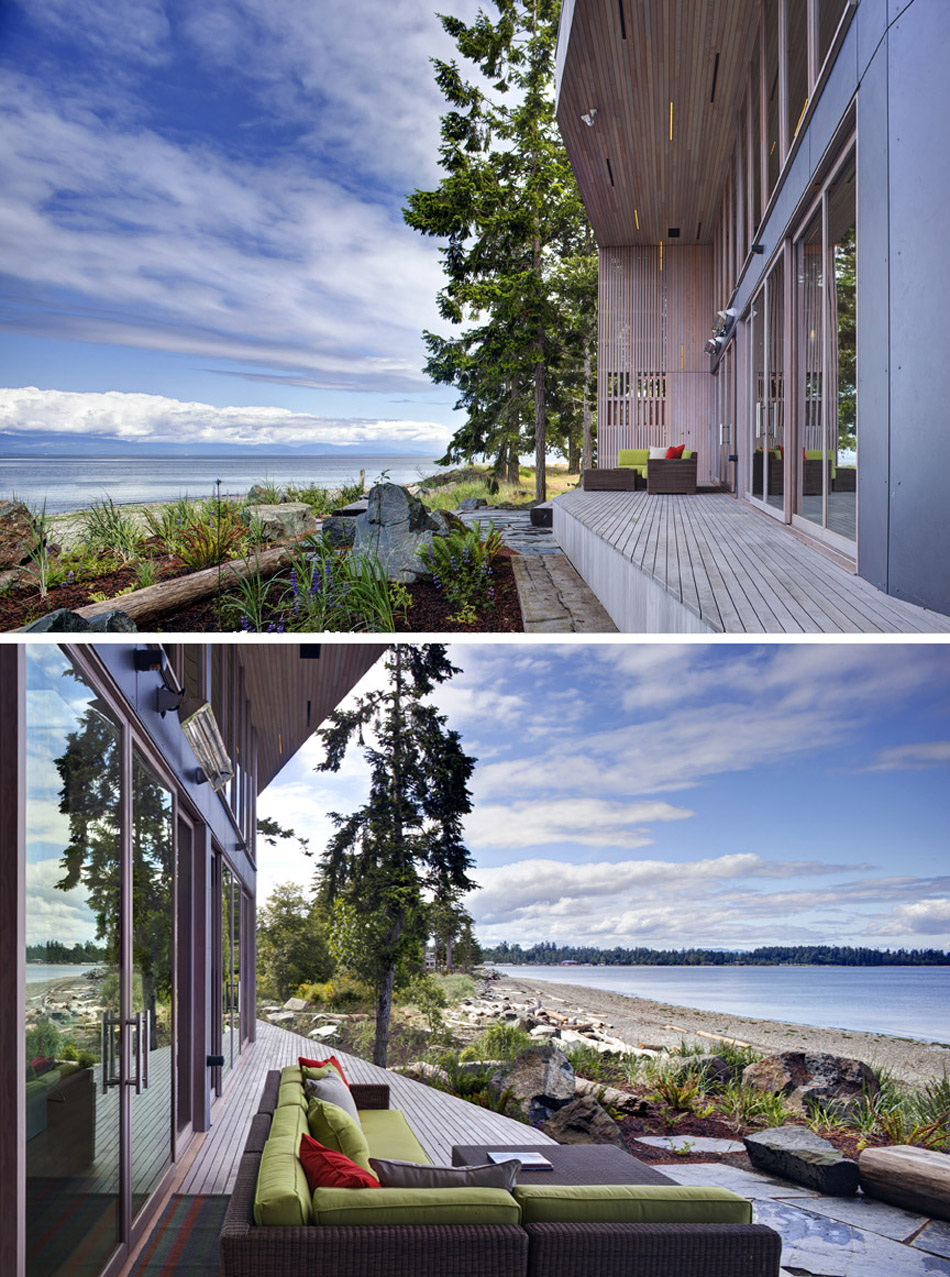
Natural Unity
Two interconnected buildings protect and reinforce the stand of giant firs. The main house is a giant sun-bleached wood tube-like enclosure, comprised of two bedroom suites set off of a double-height living area, which creates a giant aperture framing both the Canadian Rockies eastward across the Georgia Straight and the western coastal wetlands to the landward side. An enclosed bridge extends through the stately trees from the seasonally closable guesthouse with its cement-clad landward frame to connect the two volumes at the upper level. Below the elevated guest house cars can park off the planted driveway in an unconditioned porte-cochère enclosed by vertically folding translucent panels.
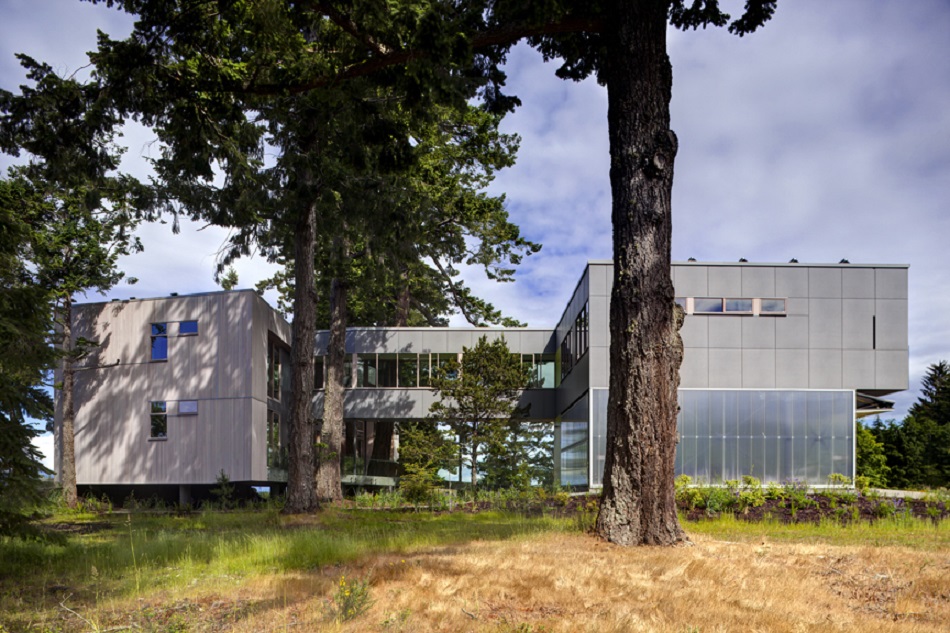
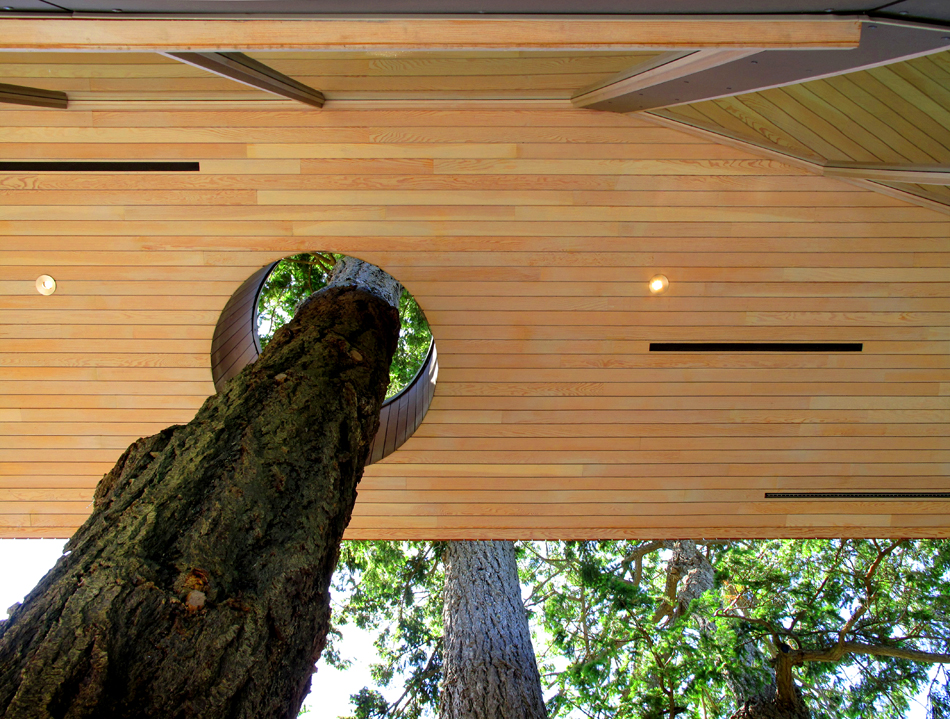
A Transparent Footprint
As the entry bridge threads through the four-foot-diameter tree trunks towards the waterfront, this ramp-way rises seven feet into the air to emerge from the floodplain to meet the elevated oceanfront residence. The main house sits above a series of piloti, each individually surveyed and hand-excavated, to avoid the tree roots below while supporting the main structure, and allowing water and air to reach the soil below. This minimizes the home’s impact on the native ecology, particularly the trees that are such a focal point of the property. The low-impact and vegetated revetment is engineered to act as an invisible passive seawall, built into the existing waterfront boundary, where it capitalizes on existing topography to break storm-swell energy. While supporting and enhancing the riparian habitat, it also provides exceptional protection against coastal erosion and is designed to enable the beach and littoral zone to develop and thrive over generations.

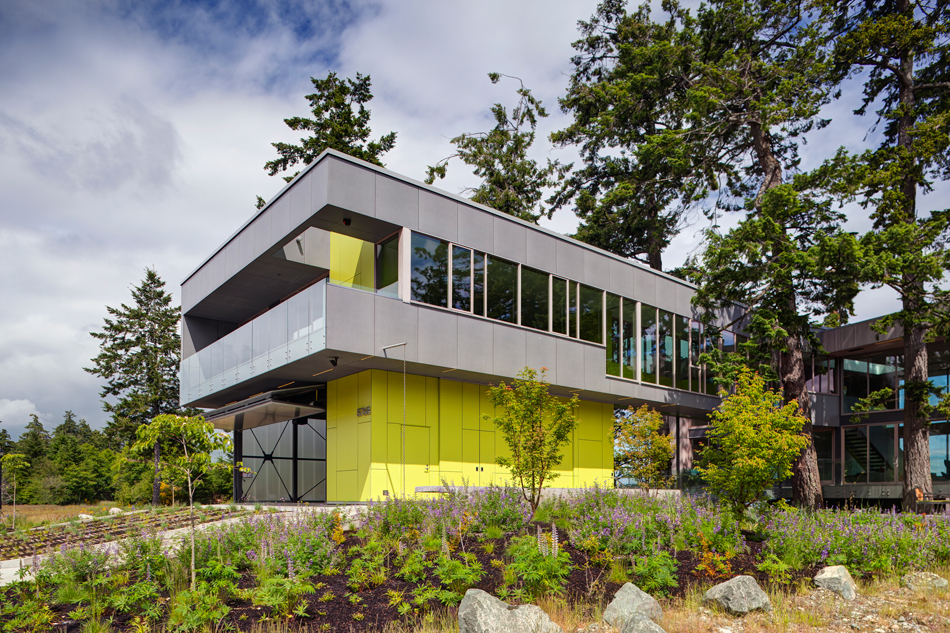
Ecology as the Core of Design
Vancouver Island comprises 300 linear miles of temperate rainforest ranging from snowy peaks to wild beaches. Preserving these majestic trees and pristine coast became a departure point for the siting strategy and formal language of the house and landscape. Existing setback requirements intended to protect the riparian habitat conflicted with this goal and needed to be amended. By proposing an elevated split volume, the central tree stand could be saved while the undisturbed ground upon which its roots depended could be protected by the integral vegetated seawall. This revetment was developed in collaboration with the Federal Oceans and Fisheries department with coastal engineers, permitting the owner to restore the riparian shoreline with reestablished native vegetation while securing the needed development variance.
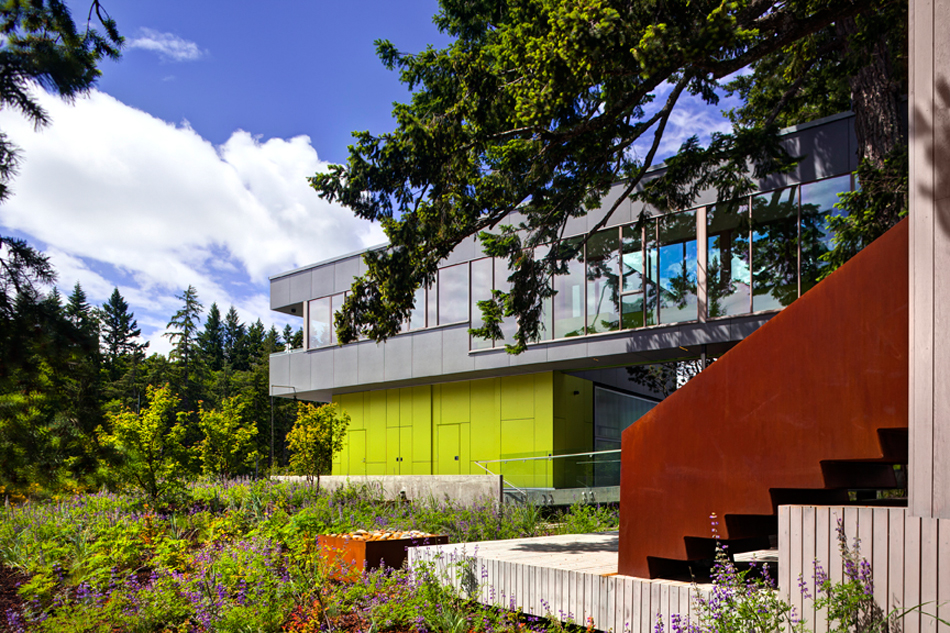
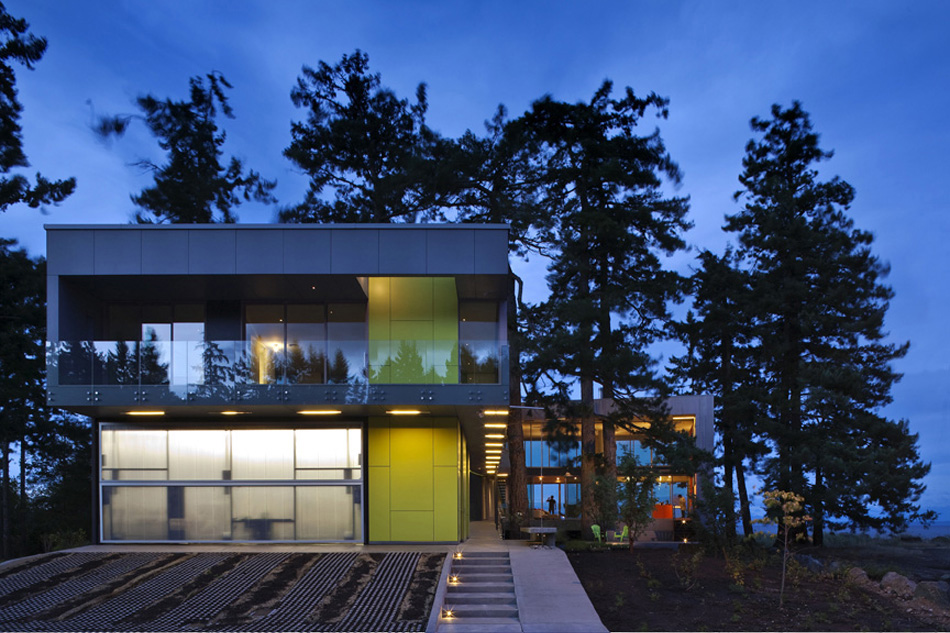
Sun and Rain
The main house incorporates an intensive green roof which accepts the constant tree drop while the south-facing guesthouse supports a 7.5Kw solar array that feeds the home’s electric boilers and LED lights, providing critical power during winter-storm blackout periods that are common to the island. INTERSTICE Architects designed both structures to collect rainwater, which is then redistributed to the tree roots below through a complex inverted branching supply system beneath the elevated structure.
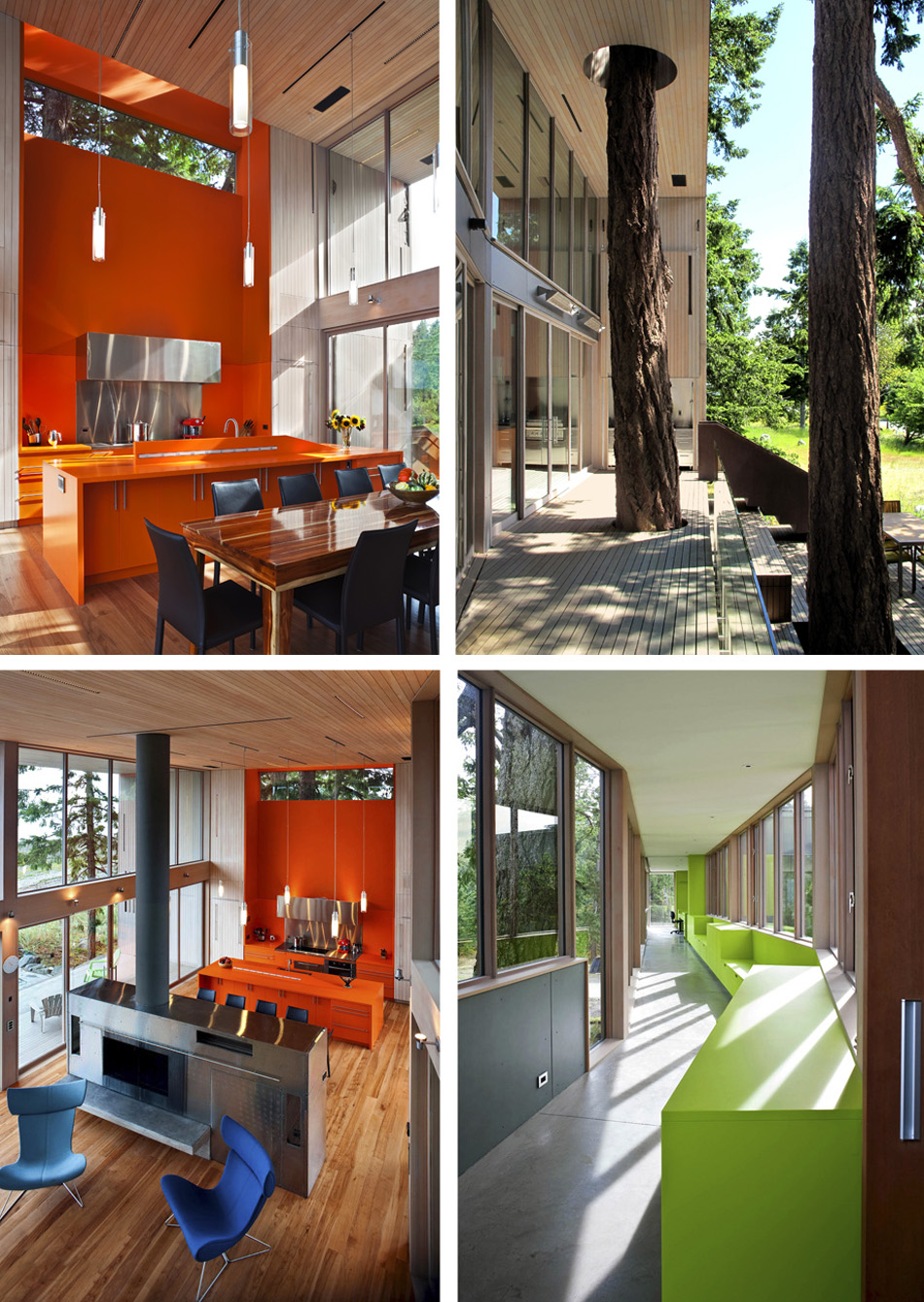

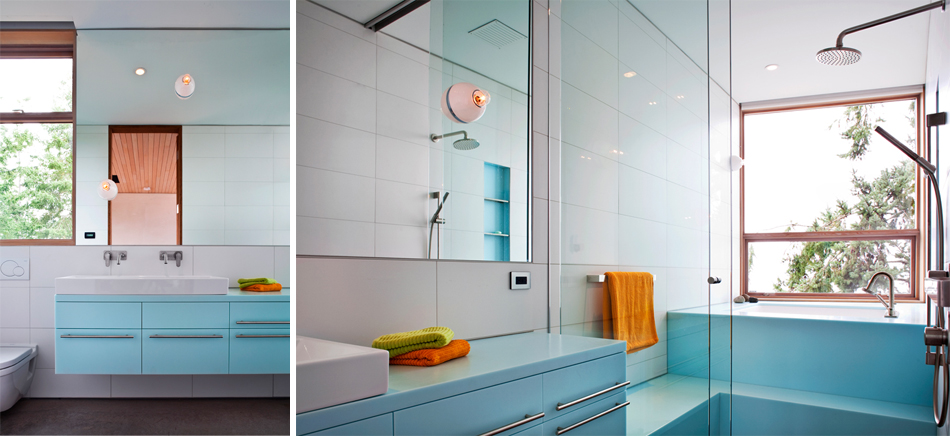
Borrowing from the Beachfront
The material palette is drawn from the rocky beaches that form the site’s shifting boundaries. The main house is clad in the local Douglas fir with deep protective eaves, stained to match the sun-bleached driftwood logs that litter the coast. Program elements such as interior baths, outdoor showers, storage, and kitchen cabinetry are all integrated into this thick rain-screen frame. In contrast, the elevated guesthouse is mineral in nature, poetically connected to the land. It is constructed of fiber-reinforced concrete siding and steel that hovers on a skeletal steel volume enclosed with translucent thermo-plastic doors, which form a ghostly diaphragm at night.
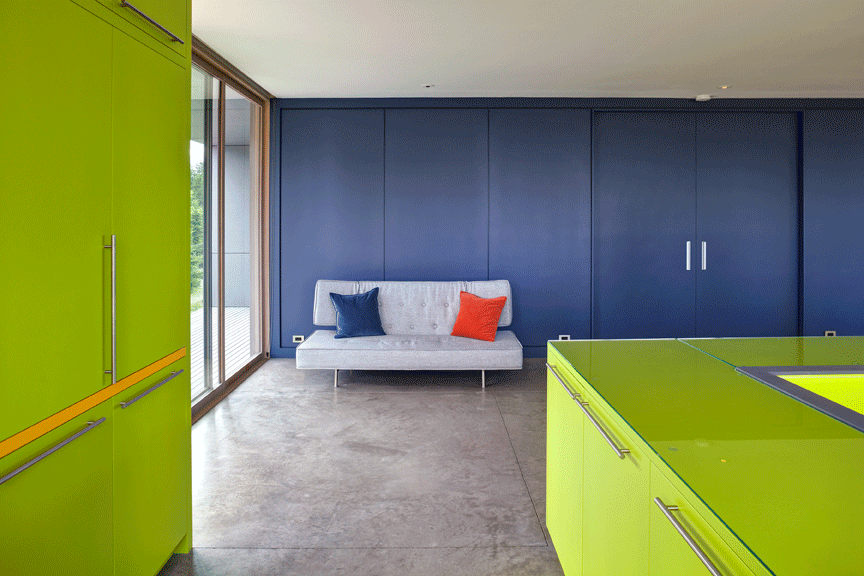
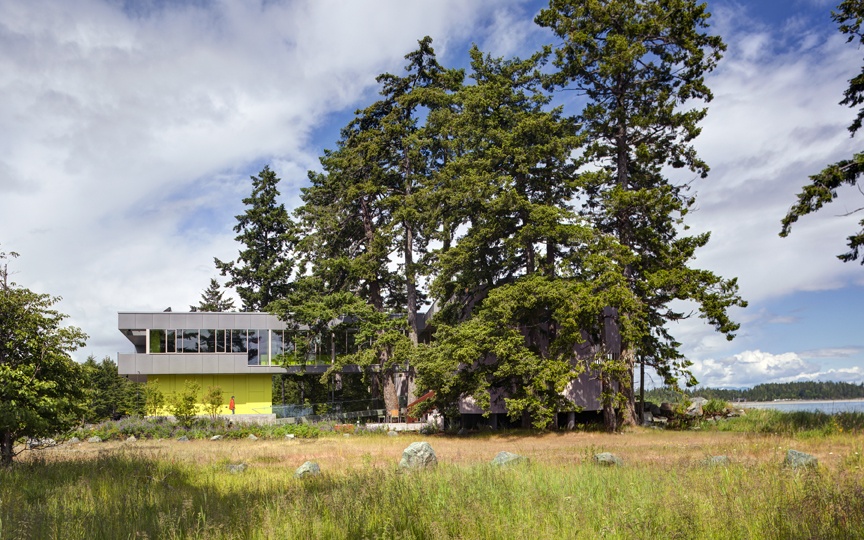
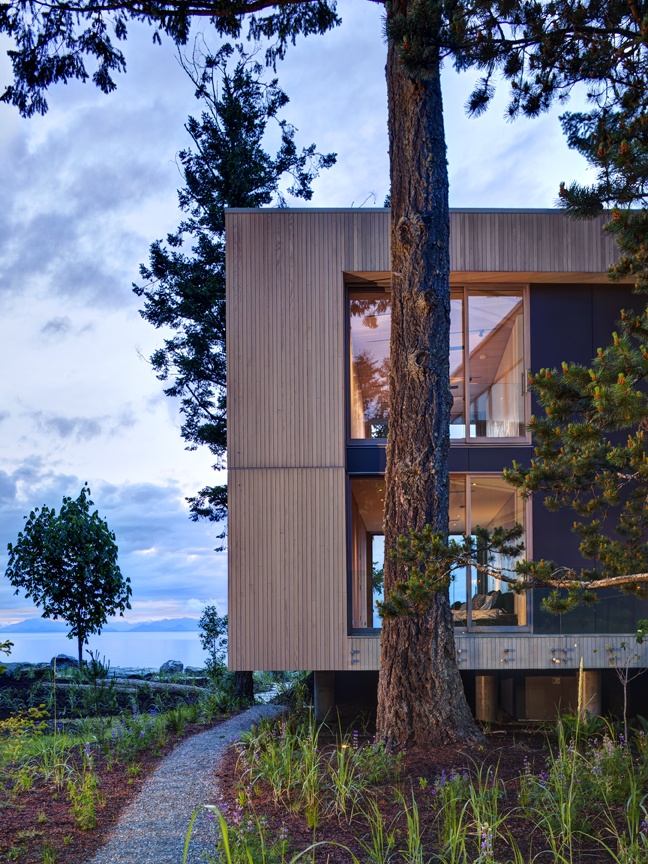
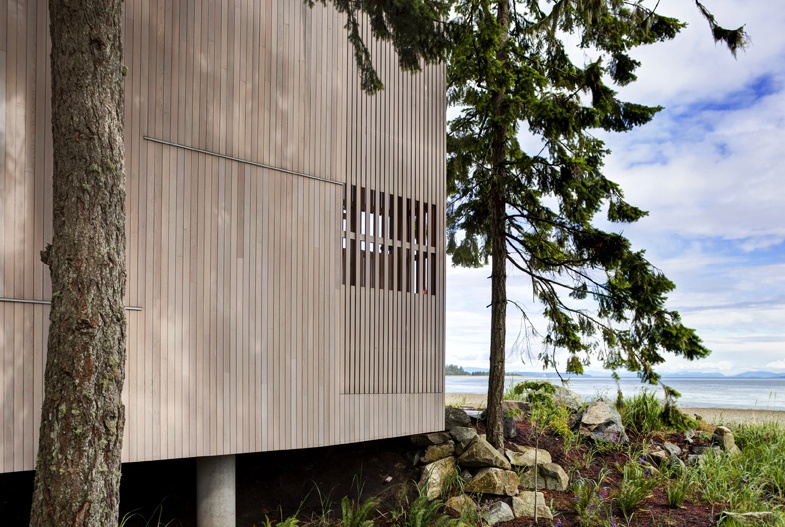
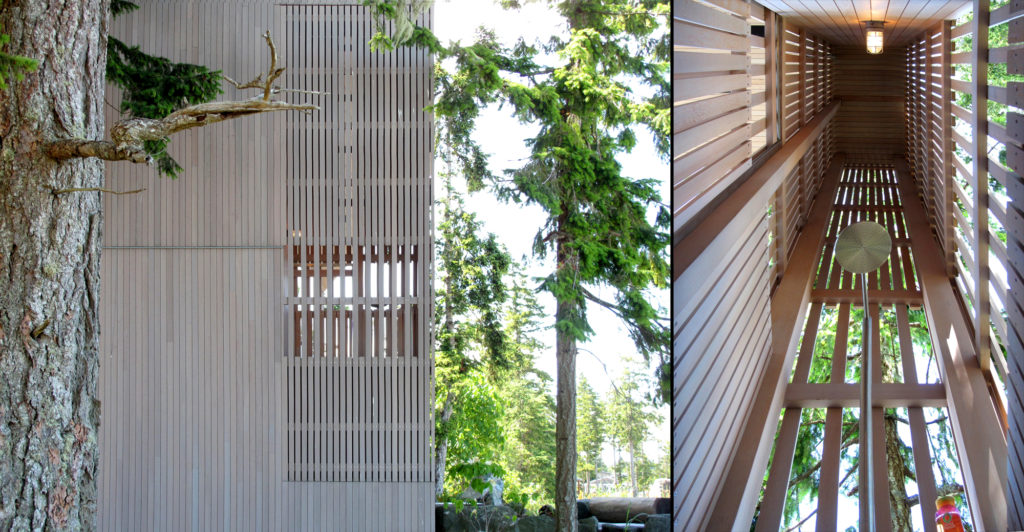

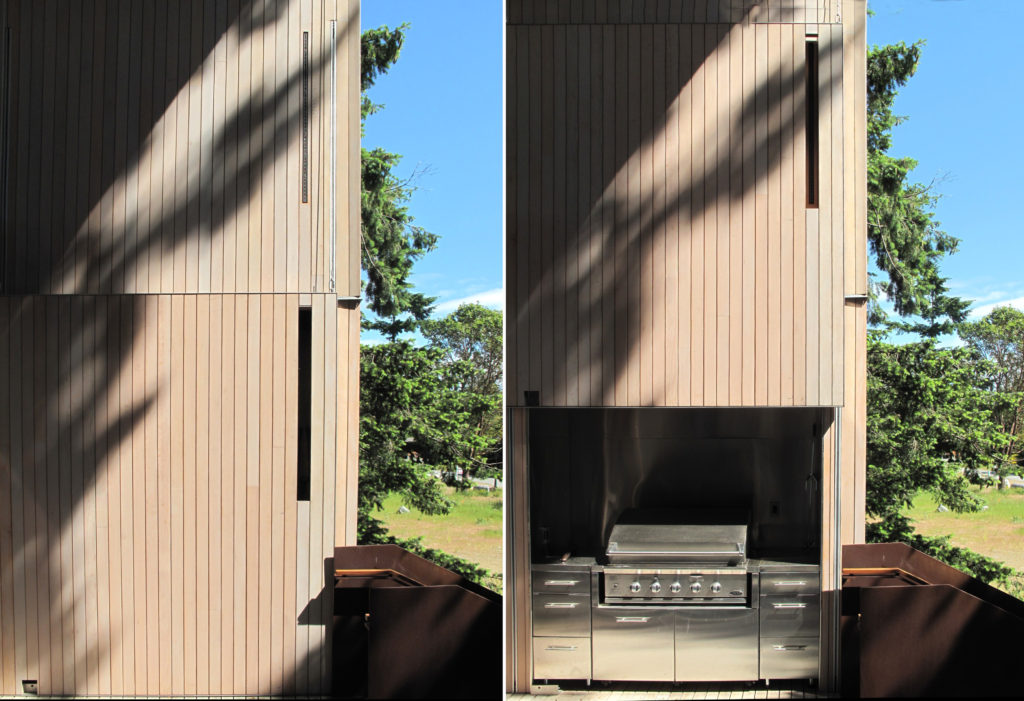
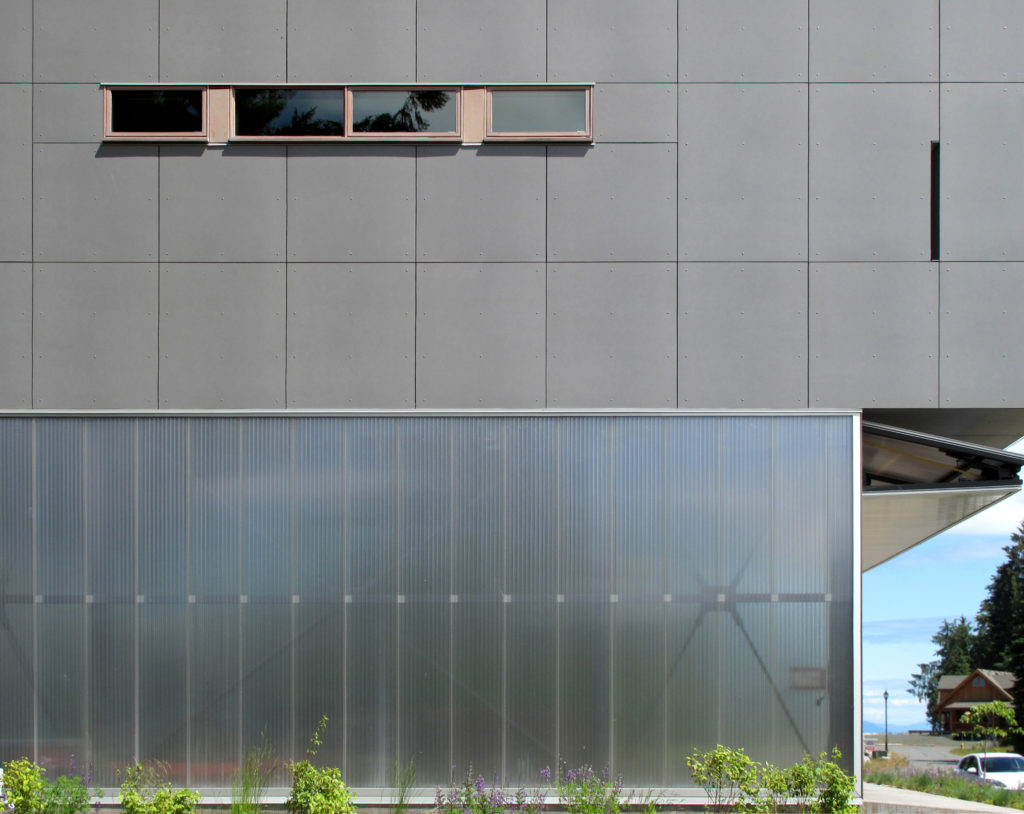
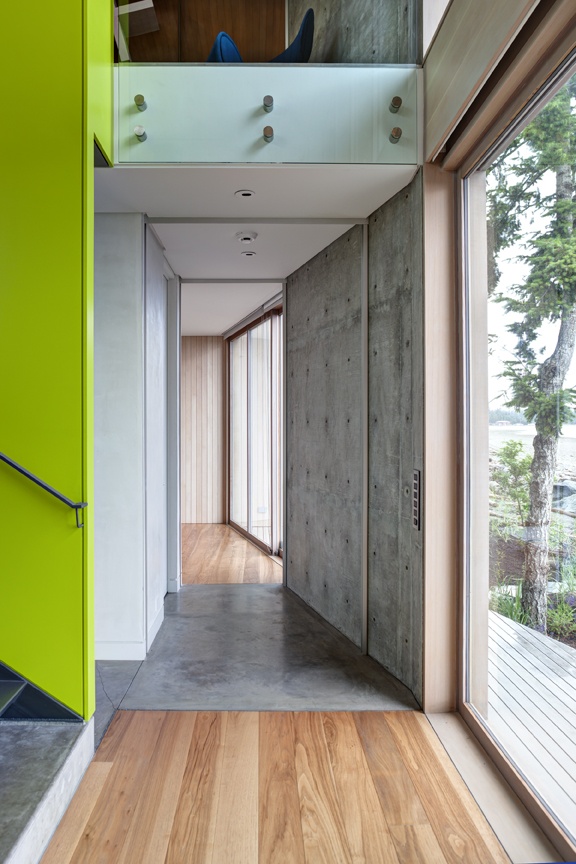
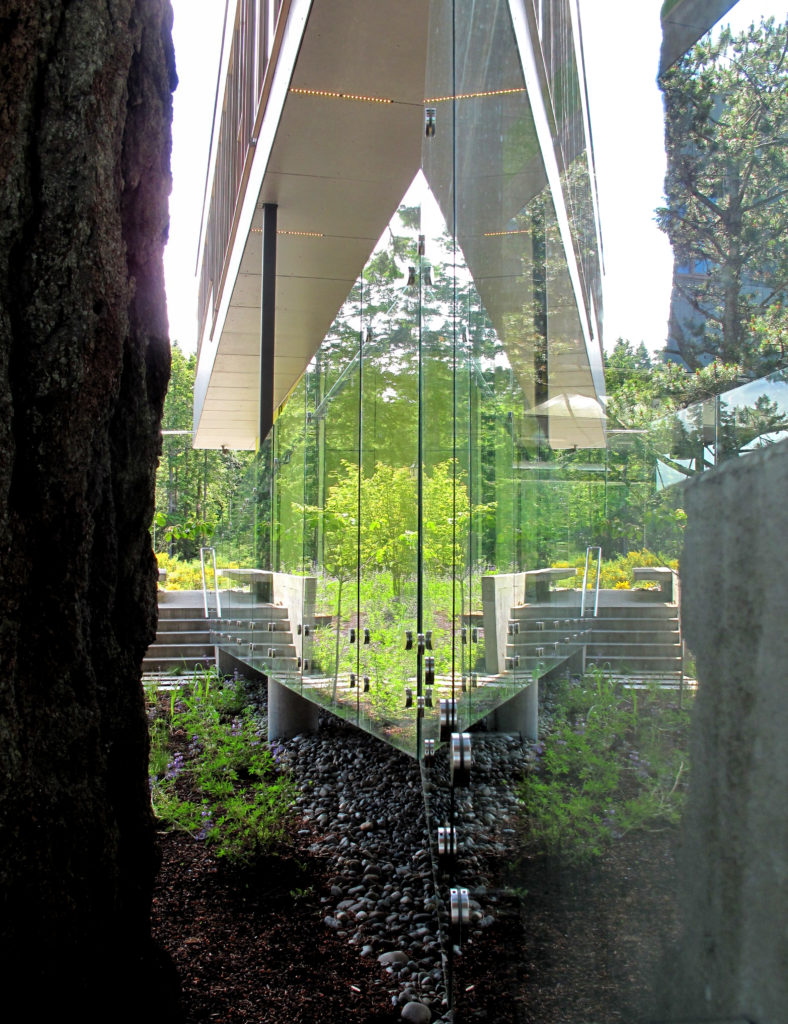
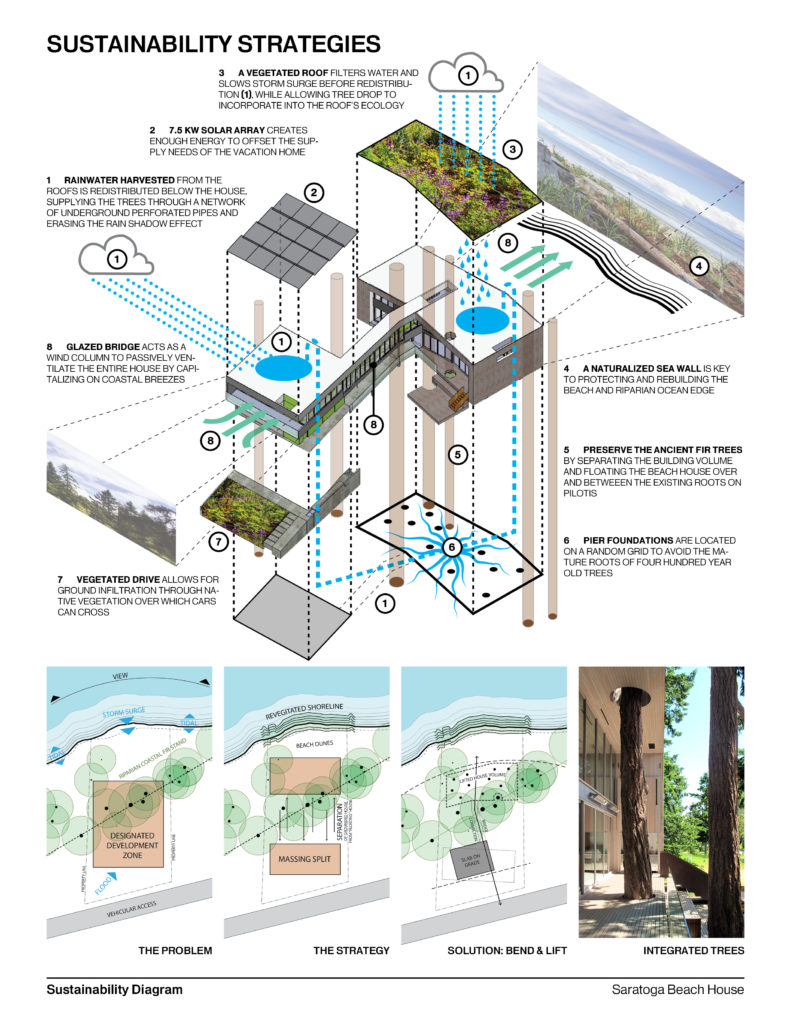

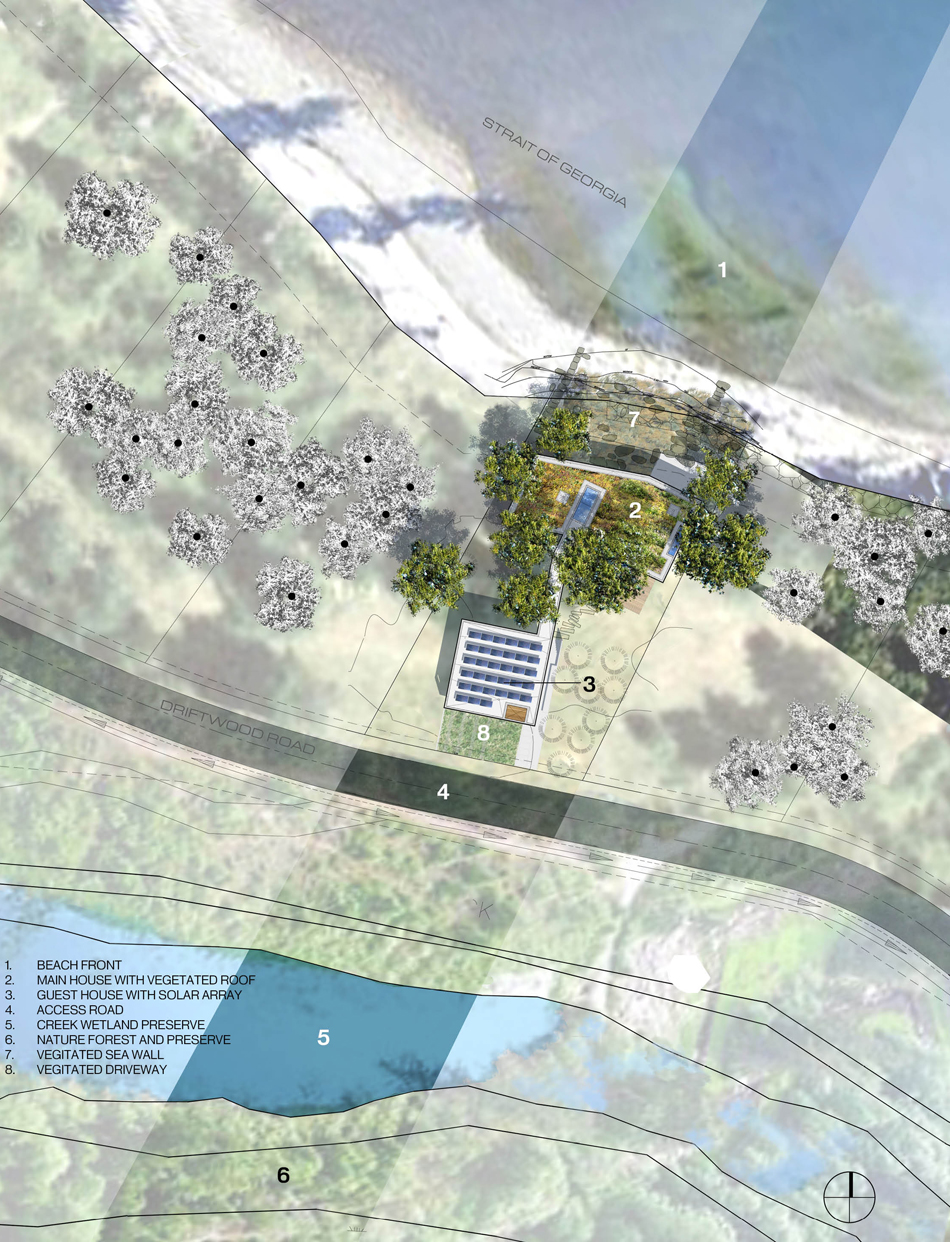
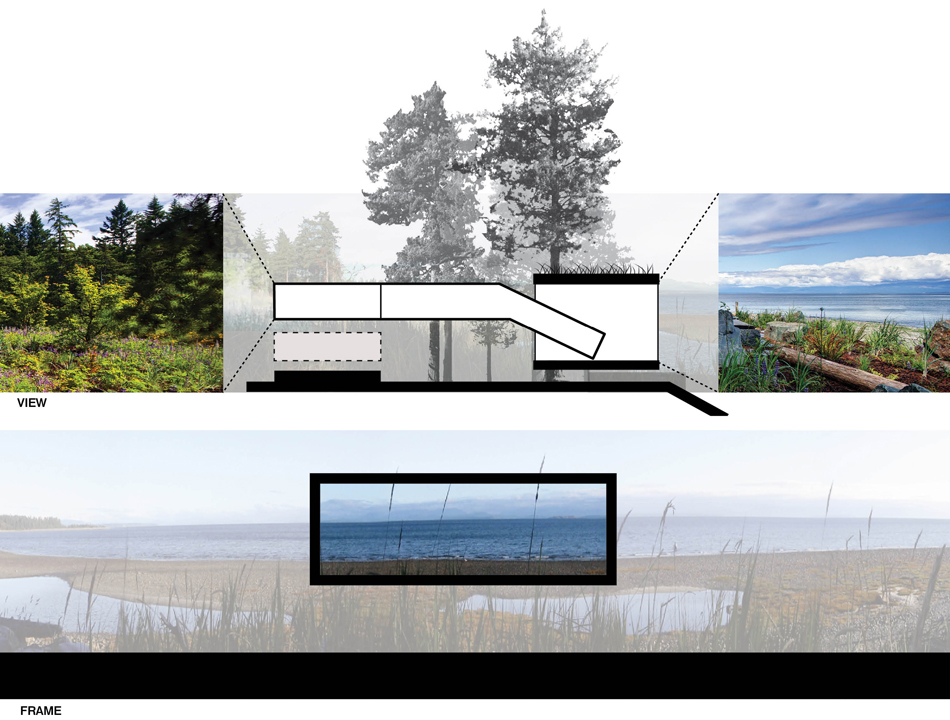
Location: Comox, British Columbia
Owner/Client: Undisclosed
Scope: Single Family Residence & Guest House
Status: Completed 2014
Photography: Brad Laughton
